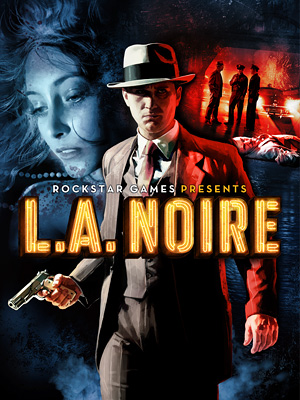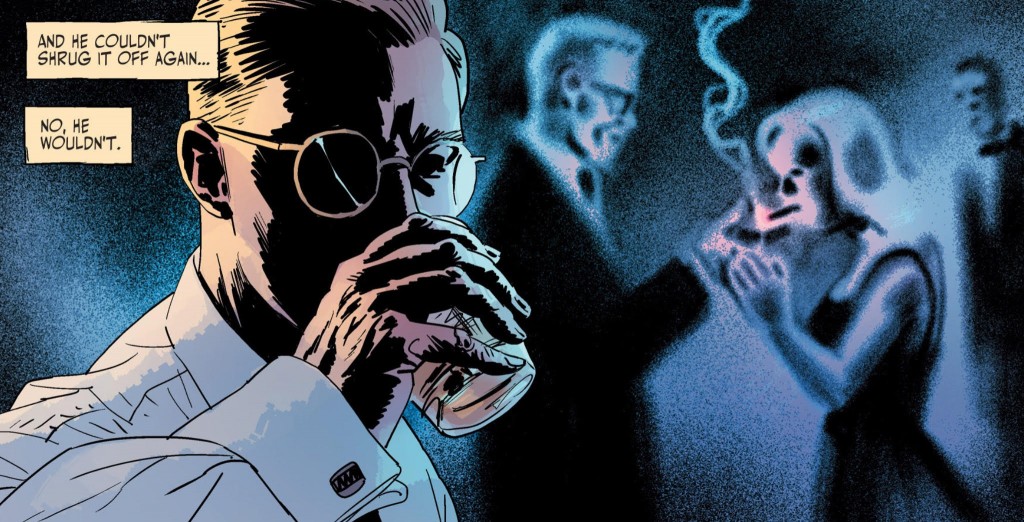The Fade Out
As I have mentioned before, I am not what you would call a movie buff. If I had to list my media in order of preference, it would easily be books, video games and television/movies. It’s just the way it is when you grow up as bibliophile. I will admit however, to being fascinated by the evolution of the film industry. The glamour of the classic movie stars is one that has yet to fade in the modern area despite our multi-billion dollar blockbusters. It’s hard not to glamorize the decade that gave us movies like Casablanca and the Maltese Falcon. Hollywood in the forties has a strange, beautifully corrupt aura about it and is ripe for the kind of story that a new series called Fade Out is ready to tell. Fade Out is the newest series by Ed Brubaker and Sean Phillips, well known for their work on the Fatale, Criminal and Incognito series. You may notice the fact that three of the four this duo has worked on, I have reviewed. I am certainly biased towards them as creators but I believe that Fade Out’s setting and story speak for themselves. Fade Out was published by Image Comics and its twelve issues have been collected in three volumes, the last of which was just published a few months ago. It’s Brubaker and Phillips at their best, combining their affinity for noir and crime in a decade that was no stranger to violence and in a town that was no stranger to corruption.
Fade Out takes place in 1948 in Hollywood at the set of a noir film which has run into serious trouble. Endless reshoots are plaguing the cast and crew, a fact not helped by the suspicious death of its star, a young actress that many in Hollywood had assumed to be the next big name. Screenwriter Charlie Parrish, still struggling from what he saw after surviving action in World War II, is torn between the lure of the bottle, his struggle to keep afloat in the cutthroat film industry and a feeling that something is deeply wrong with the death of Valeria Sommers. Charlie has been in the movie industry for too long not to know that sticking your nose where it doesn’t belong is a good way to end up dead in a ditch. But life has a funny way of turning on us when we least expect it and Charlie is drawn deeper into the maze of secrets and violence in the underbelly of glamorous Hollywood, pitting him against powerful individuals, including the big studio bosses and a security chief who will do anything to keep their well oiled machine running.
Fade Out is a classic Brubaker story, pitting a “white knight” against an outside threat which promises violence and betrayal and the threat of his own vices and corruption which reveal our white knight to be considerably less pure than you might expect. Charlie Parrish is a man who’s seen a lot of bad things, both in and out of Hollywood and has chosen to keep his head down and preserve a career as a talented screenwriter. As Brubaker delves below the surface however, Charlie began to remind me rather heavily of another damaged “white knight” in one of my other favorite media: Cole Phelps of the video game L.A. Noire. Both men are flawed individuals trying to do what they see as right in a Hollywood atmosphere that’s entirely too corrupt to allow that kind of black and white thinking. Both men have been damaged by their time in war zones and are uncertain of how to handle being back in polite society. And ultimately, it is the flaws of both men that lead them down a path that brings violence and more violence with only a little ray of hope that they might make it to the end. It’s a dark, brutal story that doesn’t pull any punches.

Much like this game. You may think you know who the hero is, but Rockstar and Brubaker laugh at your foolishness.
And I can’t end a review of a Brubaker/Phillips story without talking about just how damn good this duo is. Brubaker and Phillips have written noir and crime before, both Fatale and Criminal are proof of that. In both of those series, Phillips excels at creating the dark atmosphere that works so well with Brubaker’s natural noir style. But the film noir setting of 1940’s Hollywood really plays to their strengths. Brubaker and Phillips construct this double life of Hollywood: the dark alleys and conspiracies of its underbelly and the brilliant lights of the stages and public (and very orchestrated) lives of their stars. Charlie and his fellow crew and cast members must navigate both worlds if they hope to survive in Hollywood and the nasty atmosphere is right up Brubaker and Phillip’s alley. The glamour and the violence combine for a story that it’s impossible to look away from.
Fade Out is the classic film noir story of a detective who must ferret out the secrets behind a beautiful woman’s murder before the lies and deceit catch up with him and leave him dead in an alley. Brubaker has his signature all over this and no one is nearly as sweet or pure as they appear. Everyone in Tinseltown has a secret to hide and will do anything to keep it that way. Not to mention the government men who are starting to sniff around for any trace of communism. This moral ambiguity and tragic violence make the hunt for truth all the more compelling. If you enjoy murder mysteries or an entire cast of characters who are anything but black and white, Fade Out is a must read.
-Cait


